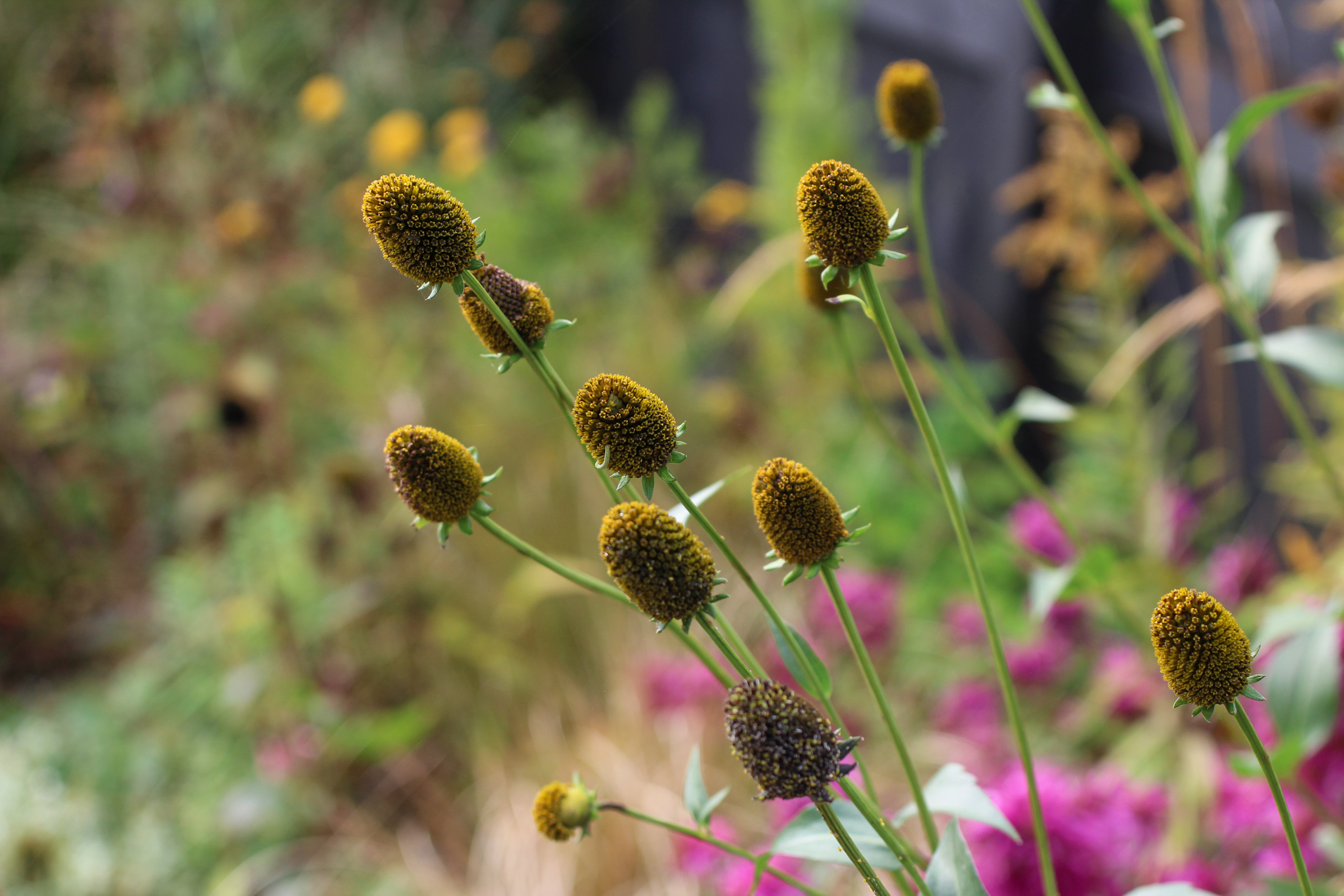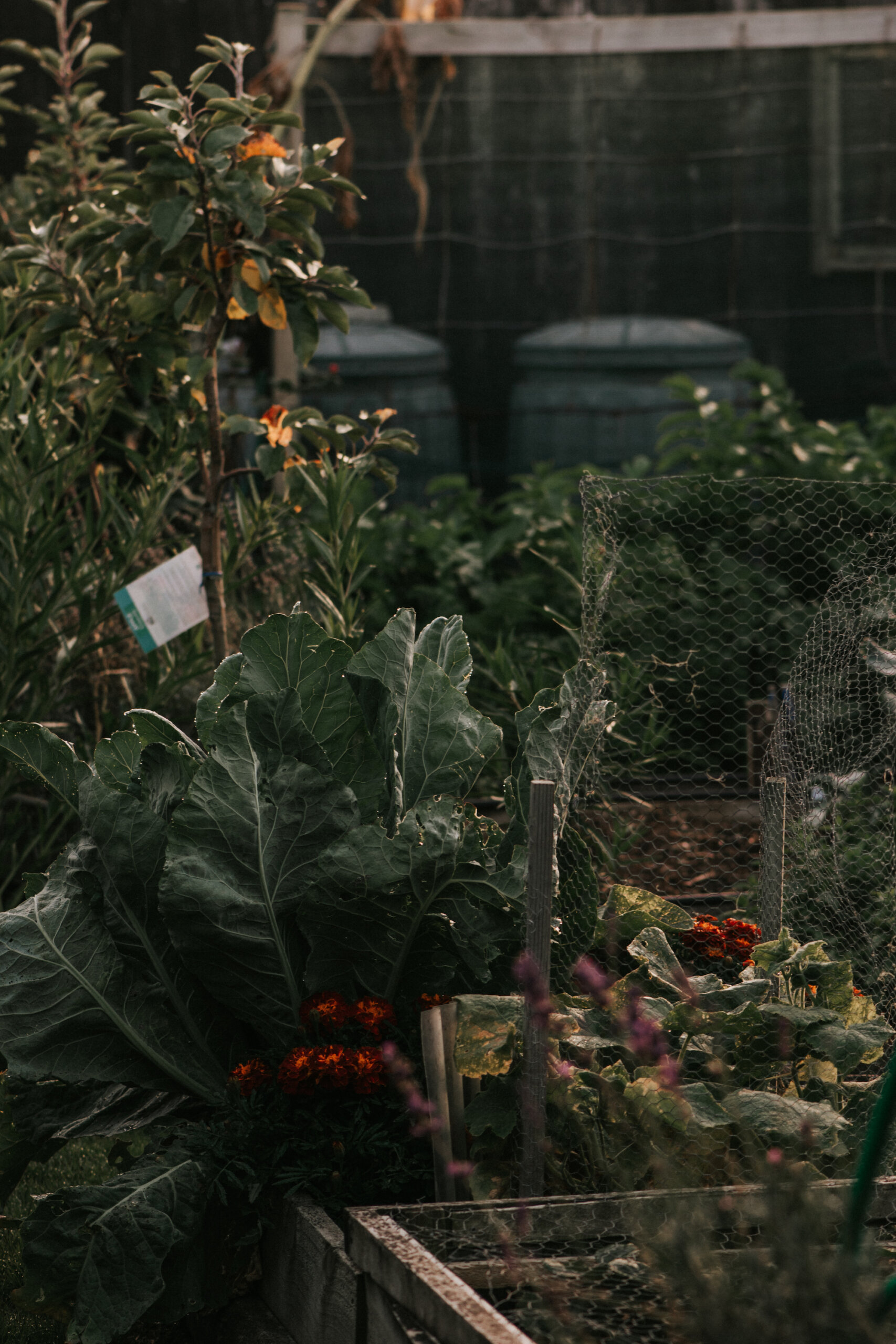This week’s words of gardening wisdom (and photos) are from our garden expert, Elly Keen.
@daydream.green
The autumn garden may seem daunting to some… Plants tower and flop, pests are plentiful and rusty seed heads seem to outnumber the blooms. It’s at this time of year that I feel a tad agitated as I wander my garden.
There is an urge to cut everything back and start fresh. If you too feel compelled to wipe the slate clean, don’t rush to toss it all into the compost bin and close the lid on the season.
Instead, muster that last bit of energy to save a few seed heads from your most treasured plants. I promise your energy will return along with the promise of spring and those little gems are the ticket to a flourishing garden once again.

Tips for Saving Seeds
- Select the healthiest plant(s) for seed saving. This is usually the first to flower or fruit, the tallest, tastiest, or most unique colour variation.
- Do not cut off the flower or vegetable until the seed is ready for harvest.
- If saving seed from a flower, wait until the seed pod turns brown.
- For fruits like tomatoes or pumpkins, wait until they ripen on the vine.
- Protect the seed pod with a mesh bag if worried about birds or animals.


Harvesting seeds
- Harvest on a sunny day, preferably in the afternoon or once morning dew has dried.
- Cut off the seed pod and store in a breathable container (like a cardboard box or bag) in a cool, dry area for two weeks.
- You can begin to separate seeds from the chaff after this time.

Sorting seeds
There are several methods to use for separating out the seed from the chaff:
Manual removal – Some seeds are large and can be easily removed from the pod. This is the case for the legume family like sweet peas, peas, beans and lupin, or flowers like calendula, sunflowers or cornflowers.
Shaking in a bag – Some seed pods can be placed into a Glad bag and given a good shake to loosen the seed. This is a helpful method for flowers such as hyssop, foxglove, nigella or poppy.
Blowing or winnowing – Other pods like cosmos can be broken apart and given a gentle blow to separate the chaff from the seed.
A colander – Break up seed heads and let the seed fall through the gaps with the remaining chaff left at the top. This technique is helpful for brassicas, leek, parsley or coriander seed.
Paper towel – Seeds inside fleshy fruit like tomatoes or pumpkins can be washed and drained inside a sieve and left to dry on top of a paper towel. Tomato seeds will stick to the paper towel but remain viable. Simply sow the paper towel when the time comes to germinate.



Storing seeds
- Store in an airtight container or ziplock bag and label with the plant name and harvest date.
- Freshness matters. Use within one year for optimal viability.
- Seeds can last for up to six years if stored correctly, although you may notice germination rates decrease the older the seed is.
- Store in a dark, cool place away from direct sunlight and extreme heat to prolong seed life.

Cross-pollination
- Some types of vegetables and flowers can cross-pollinate, resulting in offspring different from the parent. This is more common in flowers than it is in vegetables.
- Flowers that are known to cross-pollinate: Dahlias, cosmos, poppies and zinnias.
- Legumes like sweet peas, beans and peas all self-pollinate, ensuring consistent traits in saved seeds.
- Tomatoes are mainly self-pollinating but can be cross pollinated by manually transferring pollen.
- Experimentation with cross-pollination can lead to new cultivars and exciting discoveries in your garden.

Now that you have squirreled away some seeds, you can choose to scatter them around the garden in autumn (if they are hardy) or wait until spring.
Saving seeds is an easy and cost effective way of increasing the stock of the vegetables and flowers you love in your garden. There are many benefits to saving seed. It opens the door for you to appreciate the life cycle of plants and the possibilities of plant breeding.
Seeds harvested from your green space will be more suited to your garden’s climate and as a result, you will notice that the plants adapt and become more resilient to the environmental conditions and pests in your area.





